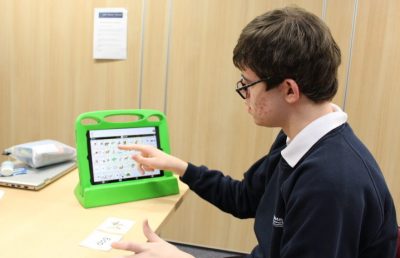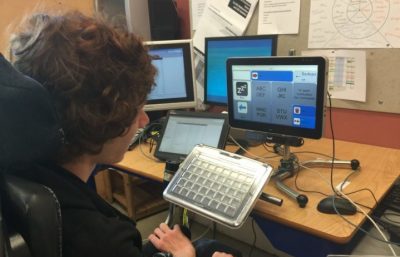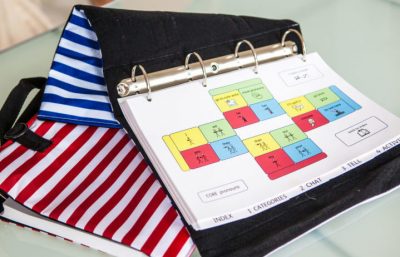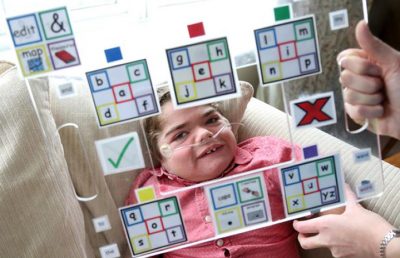What is AAC?
Augmentative and Alternative Communication (AAC) is a range of methods of communication that assists an individual who is unable to communicate using speech.
AAC communication systems generally use symbols as well as text to assist individuals who have visual impairment, difficulty spelling, or who are in the early stages of literacy development.

High-tech AAC is the use of an electronic device to communicate, where the user selects their choice and the device will read it out loud giving them a voice. These systems can be used on a variety of computerised devices such as laptops, tablets and devices which are designed specifically for AAC users, and can be mounted for easier accessibility. High-tech communication systems are used in a variety of ways depending on the access needs of the user. For example, if the users mobility does not allow them to easily touch the screen they can use other methods such as switches and eye gaze. Eye gaze uses a sensor to track the eyes allowing you to control a device and make selections by looking at that part of the screen.


Other forms of AAC are no-tech and low-tech. No-tech is using hand gestures and signing to communicate, and low-tech AAC systems require the user to either point to or look at their choice. Options will be printed, mounted onto boards or turned into books. These can be tailor made for the user with specific choices relevant to them and designed to meet their accessibility requirements.




